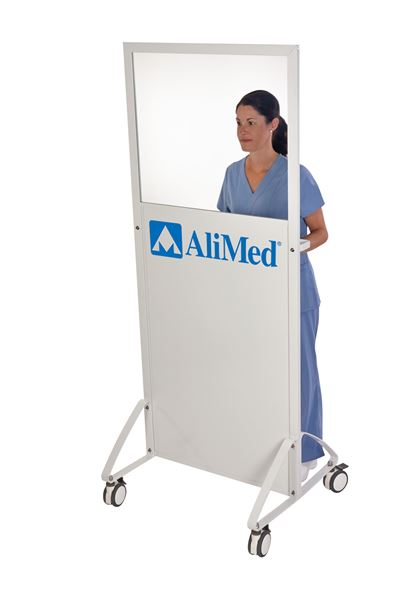-
Home
-
The Importance of Radiation Protection for Your Safety
The Importance of Radiation Protection for Your Safety
March 21, 2023

Understanding the fundamentals of radiation protection and safety is crucial in the medical field. Particularly for radiologists, technicians, and patients who may be exposed to harmful radiation during medical imaging, surgical, or other diagnostic procedures.
With advances in technology, medical imaging has become a vital aspect of diagnosing and treating illnesses. However, it's equally important to ensure that both staff and patients are not exposed to unnecessary radiation during these procedures. By understanding the principles of radiation protection, we can minimize risks and ensure healthcare provider and patient safety.
What is Radiation Protection?
Radiation protection is a generic term for any protective device that reduces exposure to harmful sources of ionizing radiation. In medical imaging, it includes devices that protect both patients and healthcare workers from hazards arising from X-ray examinations and other imaging procedures. The goal of radiation protection is to minimize unnecessary exposure while still allowing diagnostic images to be taken with minimal risk.
Healthcare providers face the challenge of balancing the need for accurate diagnosis and treatment with the risk of unnecessary radiation exposure. To manage this delicate balance, they adhere to established protocols for radiation protection. These protocols are designed to reduce the risk of exposure while still ensuring high-quality care. By using modalities like ultrasound or MRI and limiting the number of images taken during a single procedure, healthcare providers can minimize patients' exposure to radiation while still obtaining accurate results.
Moreover, digital radiography systems have many benefits over the older film-based systems. One of the advantages is that they produce better quality images without exposing patients to more radiation. Additionally, these systems provide solutions that make medical procedures faster and more streamlined for both healthcare providers and patients.
The Three Methods of Radiation Protection
There are three primary methods for protecting against the harmful effects of ionizing radiation:
- Time, which involves limiting exposure time to only necessary tests.
- Distance, where increasing the distance between individuals and radiation sources is important.
- Shielding, which can be achieved by wearing protective devices such as lead aprons or using shields or barriers between radiating sources and individuals.
These three methods for protecting against the harmful effects of radiation are commonly referred to as the "ALARA" principle, which stands for "As Low As Reasonably Achievable." By implementing this principle, healthcare professionals can help ensure that medical imaging procedures are conducted safely and without unnecessary exposure to radiation. It is important for both healthcare providers and patients to be aware of the potential risks associated with radiation exposure and take steps to minimize these risks whenever possible.
Types of Radiation Protection Devices for Staff and Patients
Radiation protection in medical imaging also includes the use of personal protective equipment (PPE) for healthcare workers. PPE is particularly important for those who work with ionizing materials or perform procedures that involve exposure to radiation. PPE can include lead and lead-free aprons, attenuation gloves, thyroid shields, and protective eyewear, among other devices. These devices all include varying levels of lead-equivalent protection to keep staff safe during procedures involving radiation.
Healthcare staff also use a variety of other protective devices. These include Radiation Protection Barriers and Table Shields, which provide a barrier between the medical personnel and the radiation source. These are ideal for reducing exposure to harmful radiation during longer procedures or when more protection is needed than from an apron. Shields are available in a range of styles from Mobile options for placement anywhere protection is required, Table Shields that protect the difficult-to-target lower body from scatter radiation, and Full-Body Shields with full-height protection.
During certain exams or procedures, adult and pediatric patients may also be required to wear protective garments such as shields or aprons designed to protect vital areas, including the breasts, eyes, or thyroid.
Understanding radiation protection safety during procedures in radiology, surgery, and other departments where radiation is used is critical. Familiarizing yourself with the three methods of protection and the various types of protective devices is equally important to reduce exposure for both staff and patients. By doing so, you can help ensure that all necessary X-ray, CT, MRI, and other imaging exams and procedures are performed safely and effectively.